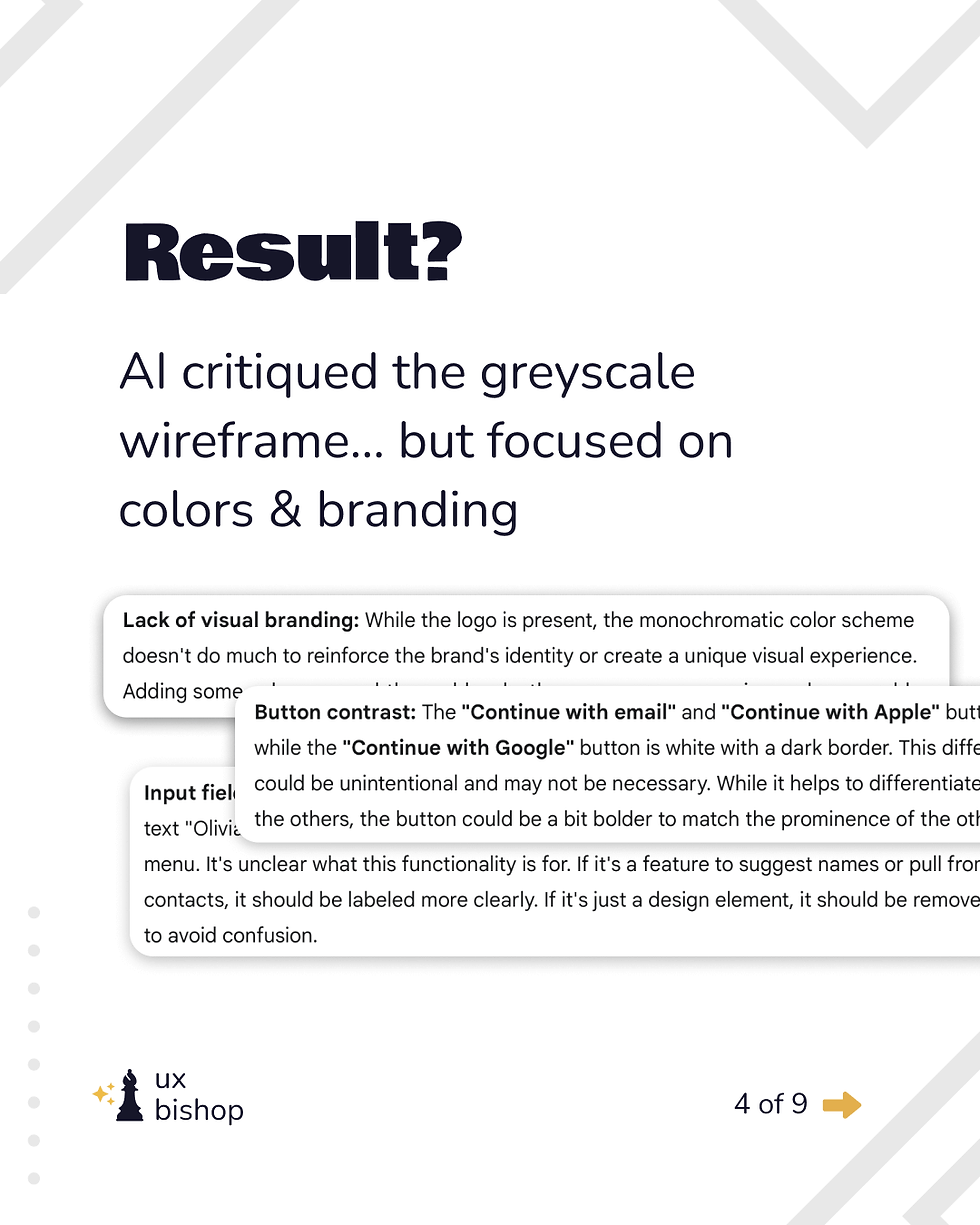Coaching AI to Critique as a Design Lead - Mentoring AI
- architette

- Sep 17
- 2 min read
Updated: Oct 13

TLDR (Executive Summary)
AI can be a powerful UX design partner... but only if you prompt it like a design lead. In this post, I walk through how a vague prompt led to fluffy feedback, and how rewriting the prompt with role, task, context, constraints, and format transformed AI into a useful critique partner. This mirrors the way you’d mentor a junior designer: set expectations, define roles, and guide toward enterprise-ready output.
The Problem: Fluffy Feedback from AI
When I first asked AI to critique a wireframe, its feedback was surface level and unhelpful. The problem wasn’t AI... it was my prompting. My original prompt left too much room for interpretation. Without a task, constraints, role, or an expected format... AI defaulted to surface-level commentary.



The Design Leadership Approach: Coaching Through Prompts
Just like mentoring a junior designer, you don’t just accept the first draft. You coach. You set expectations. You provide context.
So I reframed my ask:
Define AI’s role (as a UX/UI designer and usability expert)
Clarify the task (critique, evaluate and identify actionable improvements)
Add context (mobile sign-up wireframe)
Set constraints (focus on heuristics, accessibility, and scalability)
Specify format (bullet point suggestions points)

The Transformation: From Fluff to Substance
Once coached with a better prompt, AI shifted from vague to detailed critique. That’s the difference between surface feedback and enterprise-ready critique.

The Takeaway: Prompting = Design Leadership
The lesson here isn’t just about AI... it’s about leadership. Prompting AI is like mentoring a junior teammate. If you want critique that’s structured, contextual, and actionable, you need to guide it there.
Think of prompting as:
Defining expectations (role + context)
Setting constraints (focus areas + enterprise rules)
Modeling the format (structured, usable outputs)

Conclusion: Treat AI Like Your Intern
AI is only as strong as the leadership you provide. The same way you wouldn’t expect a new intern to deliver enterprise-ready design critique without guidance, you can’t expect AI to either. But with the right coaching, it can grow into a valuable design partner.

👉 Have prompt frameworks of your own? Tried this method and seen results? I’d love to hear from you!
… and before you ask, yes… I wrote this post with the help of AI but heavily edited just about every line so it is more of myself. 😉
Disclaimer: The thoughts shared in this blog are solely my own and do not represent the perspectives of my professional relationships or clientele.
Comments